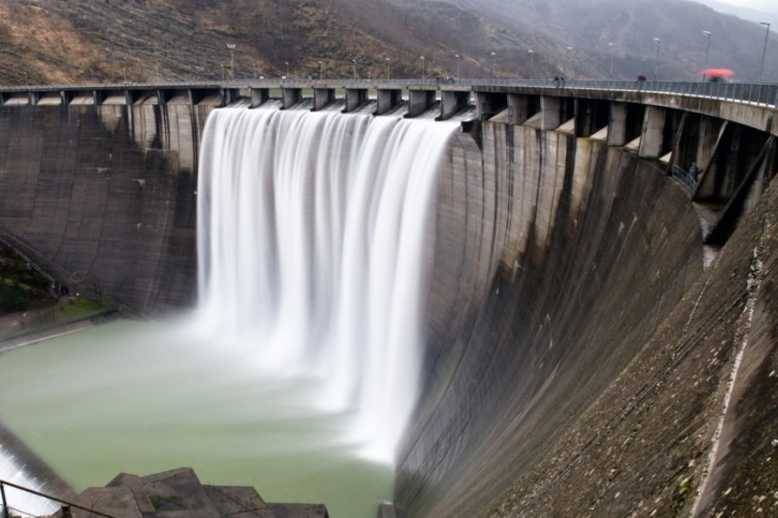
KARACHI: Pakistan’s hydroelectric power production hit a new high of 5,668 gigawatts-hour (GWh) in August this year as the readily available energy source made large contributions to fulfill the country’s total energy needs.
Due to high power production from hydel energy sources, the country’s dependence on expensive oil-based power decreased while the overall cost of production was slashed by 13 per cent to Rs4.83 per unit.
Frequent monsoon rains revitalised the water level in the dams which resulted in high production of hydroelectricity.
According to the National Electric Power Regulatory Authority (Nepra) report, hydropower generation registered an all-time high during August.
It merits mention here that the capacity to generate more hydel power was achieved following the addition of new plants to the system, which included the Neelam-Jhelum and Tarbela 4th Extension projects.
The Neelum-Jhelum hydroelectric power project became functional in phases between April and August 2018 and has an installed capacity of 969 megawatts. Meanwhile, the Tarbela 4th Extension hydroelectric power project, with production capacity of 1,410MW, started operating in October 2018.
High electricity production from hydel power sources made up 40 per cent of the total electricity generated in the country, which lessened the reliance on expensive energy sources like furnace oil and diesel, which could only add 14,052 GWh in August this year.
According to Nepra, the share of hydel power rose to 40 per cent as compared to 32 per cent in August 2018. A 13 per cent increase in the share of coal-based power generation was also witnessed which was 10 per cent in August 2018.
Meanwhile, the share of furnace oil in the overall power production dropped to four per cent as compared to 12 per cent last year.
The government has decided to cut down its reliance on oil-based power generation and to replace it with cheaper, cleaner and renewable energy sources.
Further, the cost of power produced from imported re-gasified liquefied natural gas (RLNG), otherwise considered a cheap energy source, remained high and was only slightly lower than that of furnace oil, the data showed.
Moreover, share of electricity produced from renewable sources like wind and solar fell to three per cent in August this year as compared to five per cent in the same month in 2018, according to available data.
With more electricity generated from hydel power sources, the cost of power generation dropped by almost 13 per cent to Rs4.83 per unit (kilowatt-hour) in August this year as compared to 5.5 per unit in August last.
The drop in the cost was led by a 27 per cent increase in hydroelectric power production to 5,668GWh compared to 4,478GWh last year.
However, the power generated from locally produced gas, which proved to be a much cheaper fuel than the imported RLNG, declined by 18.2 per cent to 1,668GWh.
Due to high power production from hydel energy sources, the country’s dependence on expensive oil-based power decreased while the overall cost of production was slashed by 13 per cent to Rs4.83 per unit.
Frequent monsoon rains revitalised the water level in the dams which resulted in high production of hydroelectricity.
According to the National Electric Power Regulatory Authority (Nepra) report, hydropower generation registered an all-time high during August.
It merits mention here that the capacity to generate more hydel power was achieved following the addition of new plants to the system, which included the Neelam-Jhelum and Tarbela 4th Extension projects.
The Neelum-Jhelum hydroelectric power project became functional in phases between April and August 2018 and has an installed capacity of 969 megawatts. Meanwhile, the Tarbela 4th Extension hydroelectric power project, with production capacity of 1,410MW, started operating in October 2018.
High electricity production from hydel power sources made up 40 per cent of the total electricity generated in the country, which lessened the reliance on expensive energy sources like furnace oil and diesel, which could only add 14,052 GWh in August this year.
According to Nepra, the share of hydel power rose to 40 per cent as compared to 32 per cent in August 2018. A 13 per cent increase in the share of coal-based power generation was also witnessed which was 10 per cent in August 2018.
Meanwhile, the share of furnace oil in the overall power production dropped to four per cent as compared to 12 per cent last year.
The government has decided to cut down its reliance on oil-based power generation and to replace it with cheaper, cleaner and renewable energy sources.
Further, the cost of power produced from imported re-gasified liquefied natural gas (RLNG), otherwise considered a cheap energy source, remained high and was only slightly lower than that of furnace oil, the data showed.
Moreover, share of electricity produced from renewable sources like wind and solar fell to three per cent in August this year as compared to five per cent in the same month in 2018, according to available data.
With more electricity generated from hydel power sources, the cost of power generation dropped by almost 13 per cent to Rs4.83 per unit (kilowatt-hour) in August this year as compared to 5.5 per unit in August last.
The drop in the cost was led by a 27 per cent increase in hydroelectric power production to 5,668GWh compared to 4,478GWh last year.
However, the power generated from locally produced gas, which proved to be a much cheaper fuel than the imported RLNG, declined by 18.2 per cent to 1,668GWh.
